The ocean is scary enough just by existing — its vastness, power, and mystery are enough to make anyone feel small. So, I’d like to preemptively apologize to anyone with thalassophobia (fear of deep water) because what comes next might not help. Now, add in creatures that have inspired many horror movie designs, and suddenly the deep sea becomes a world straight out of a nightmare.
Okay, maybe I’m exaggerating (a little). Our brains are wired to recognize human faces and feel comfortable with them, which is probably why anything that looks even slightly uncanny or different triggers our deepest fears. Sure, we’ve got some scary surface-level residents, like massive great white sharks, but if I’m being honest? I find dolphins a little unsettling, too.
When it comes to sea creatures, their homes are divided into five main zones based on depth and light penetration:
● Sunlit Zone: The top layer, extending down 200 meters (650 feet). Sunlight reaches this zone, allowing photosynthesis to occur.
● Twilight Zone: Ranging from 200-1,000 meters (650-3,300 feet), this zone has minimal sunlight, and most organisms rely on bioluminescence.
● Midnight Zone: Complete darkness starts here, 1,000-4,000 meters (3,300-13,000 feet), with crushing pressure.
● Abyssal Zone: From 4,000-6,000 meters (13,00-20,000 feet), temperatures are just above freezing, and the pressure is extreme.
● Hadal Zone: The deepest part of the ocean, reaching 10,994 meters (36,000 feet), in places like the Mariana Trench.
Now, let’s dive (pun intended) into five of the most fascinating and — let’s be honest — certainly eerie deep-sea creatures, all of which have existed for millions, if not hundreds of millions, of years.
1. The Glass Squid (Taonius borealis)

Where It Lives: North Pacific Ocean (Alaska, Japan, Canada)
Ocean Zone: Twilight to Midnight zone
Diet: Small fish, crustaceans, and other cephalopods
Predators: Sperm whales, deep-sea fish, other squid
Typically dwelling between 200-1,500 meters (660-4,920 feet) beneath the surface (and some even deeper), this ghostly balloon floating through the abyss is a deep-sea squid. Specifically a part of the glass squid family, as its semi-transparent body reflects its surroundings. This trait allows it to blend into the darkness, while its large building eyes give it a permanent flabbergasted expression. Unlike traditional squids, its fins extend from its body like tiny wings, helping it to glide gracefully. With its gelatinous body and bio-luminescent abilities, one could confuse it for a glow stick. Glass squids have evolutionary roots going back at least 200 million years.
2. The Frilled Shark (Chlamydoselachus anguineus)
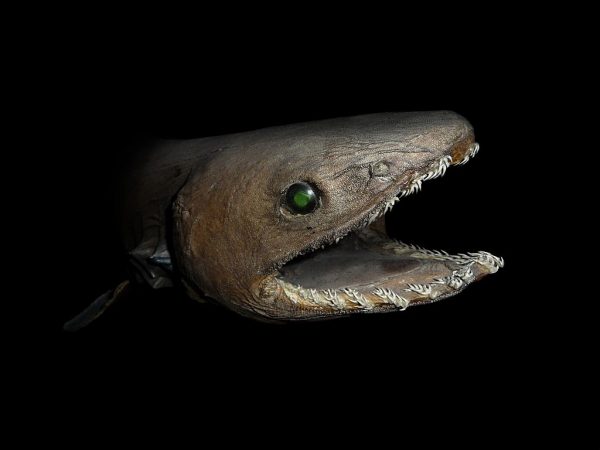
Where It Lives: Atlantic and Pacific Oceans (Japan, Portugal, Australia, California)
Ocean Zone: Midnight Zone
Diet: Deep-sea fish, squid, and smaller sharks
Predators: Larger sharks (if they dare to approach)
Nicknamed “The Lizard Shark,” the frilled shark dates back around 80 million years (Late Cretaceous period) and is one of the ocean’s most primitive and terrifying creatures. Found at depths of 500-1,500 meters (1,640-4,920 feet), this living fossil hasn’t changed much in over 80 million years. With its eel-like body, ruffled gills, and 300 needle-sharp teeth, it looks like something straight out of a horror film. Unlike most sharks, the frilled shark hunts by lunging forward like a snake, capturing prey with its extendable jaws. The frilled shark may have encountered other ancient species, such as the Megalodon, a giant prehistoric shark that once ruled the seas.
3. Barreleye Fish (Opisthoproctidae)
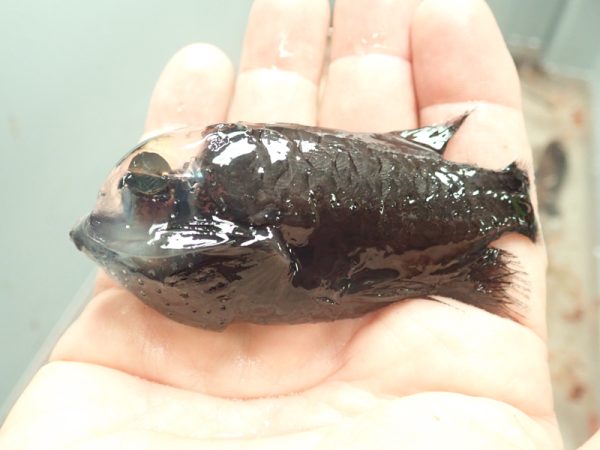
Where It Lives: Pacific Ocean (California, Hawaii, Japan)
Ocean Zone: Twilight Zone
Diet: Zooplankton, jellyfish, and small drifting invertebrates
Predators: Not widely documented but larger deep-sea fish and cethlopods
Residing at depths of 600-800 meters (2,000-2,600 feet), where almost no light penetrates, this creature’s nickname “spook fish” hardly does it justice. The barreleye fish is one of the strangest fish on Earth — which is saying something for the deep sea. It has a completely transparent head and green rotating barrel-shaped eyes that can look straight up through its skull to spot prey while still lurking in the shadows. They have been around for millions of years, dating back to the Eocene Epoch (about 55 to 33 million years ago), adapting to their extreme deep-ocean environment.
4. Chimaera (Chimaeriformes)
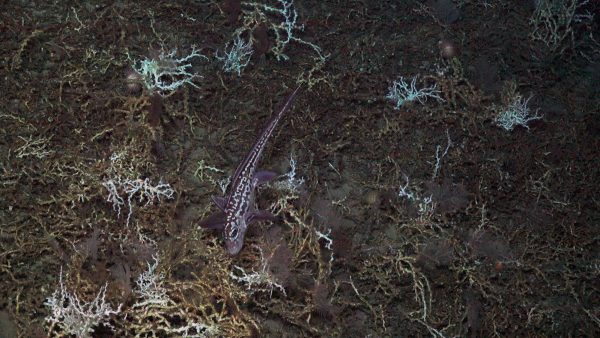
Where It Lives: Atlantic, Pacific, and Indian Oceans (New Zealand, South Africa, North America)
Ocean Zone: Midnight to Abyssal Zone
Diet: Crustaceans, mollusks, and small fish
Predators: Larger deep-sea sharks and some deep-diving marine animals
The chimaera is one of the oldest surviving species in the ocean, with lineage tracing back around 300-400 million years ago (Carboniferous period). Also known as the “Ratfish” or “Ghost shark”, this creature is found between 200-2,600 meters (660-8,500 feet) beneath the surface. These cartilaginous fish have smooth, scaleless skin, large haunting eyes, venomous spines, and a notable set of rabbit-like teeth. It glides through the dark waters with an eerie grace, living up to their ghostly reputation.
5. Giant Isopod (Bathynomus)
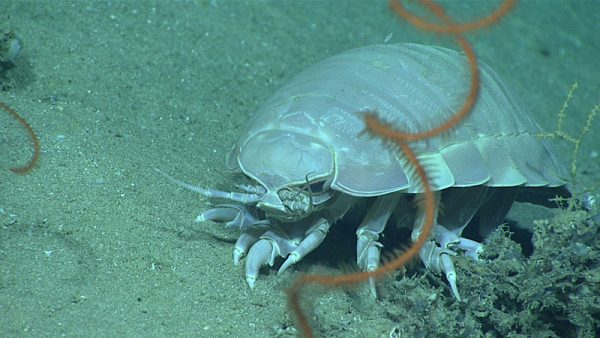
Where It Lives: Atlantic, Pacific, and Indian Oceans (Gulf of Mexico, South China Sea, Japan)
Ocean Zone: Abyssal Zone
Diet: Scavenger—feeds on dead fish, whales, squid, and anything else that sinks to the seafloor
Predators: Very few due to tough exoskeleton, but some deep-sea sharks may eat them
The ocean’s version of a giant roly-poly, the giant isopod is just as creepy as it sounds. Living between 170-2,140 meters (560-7,020 feet), these scavengers roam the ocean floor, feasting on whatever carcasses sink to the depths. Food can often be scarce, so they’ve adapted by surviving without it for up to a year. Having existed for over 160 million years — dating back to the Jurassic period — they are truly ancient survivors. Their 14 spindly legs, segmented exoskeleton, and constantly twitching antennae give them an eerie look that some find quite charming. They’re closely related to pill bugs (woodlice) and can curl into a defensive ball when threatened. And, thanks to deep-sea gigantism, they can grow up to 20 inches long.
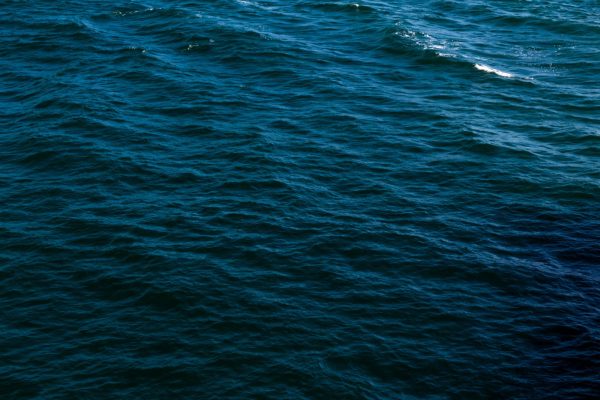
These are only five of the many fascinating creatures that inhabit the entire deep-sea ecosystem. Some notable mentions include the anglerfish, giant squid, and giant crab, just to name a few. The deep ocean is still full of mystery, and as exploration continues, who knows what other eerie and remarkable creatures might be discovered next?









